MuseumTrade.org is committed to compiling all the tips, tricks, successes, and yes, failures from museum pros into one searchable database. But sometimes the answers just lie in a good book. A book that niches down hard and pulls out each detail. Books are a nice reference especially when you need to highlight or dogear a favorite section for later use in storage or in the gallery, or to share with your colleagues.
Like you these practitioners poured their blood and sweat into thier work so you and I could get that much better at our jobs. Sometimes it’s a section on how to work smarter not harder, other times it’s a nuanced technique, other times it’s what NOT to do; these practical books are here to help. I’ve compiled a really excellent list of books for museum pros like you and me. Here are the books we have or are going to order. I did a deep-dive in researching these books, I thought I’d help the MT community by compiling a description of each of them from the perspective of a museum pro. This list will grow over the years and is thus presented in no particular order. As these books come in and we get through them, I’lll make updates here as well.
Making the case: A great way to increase your knowledge and expertise is to ask your institution to make this purchase for you. Many places have a staff development fund that generally goes to conference trips, workshops, or webinars. But a book purchase fits neatly into this bucket as well. Often there will be a small pot of money at the end of the fiscal year that goes unused, sadly. You can help out by applying for those funds to buy one of these books. Good luck.
Did I miss a crucial book?! Please let me know via the comment below or DM me: [email protected] Here we go….
Each book will have an Amazon link for your convenience. It costs you nothing to click through but will kick back a small commission that will help MuseumTrade’s mission. Thanks!
1.) The Preparator’s Handbook: A Practical Guide for Preparing and Installing Collection Objects
by Andrew Saluti
- Get yours HERE
I actually just ordered The Preparator’s Handbook: A Practical Guide for Preparing and Installing Collection Objects by Andrew Saluti, and I have to say, it looks really practical. We all know that preparing and installing collection objects can be a real challenge, but this book provides a wealth of practical advice and tips to help make the process smoother and more effective.
The book starts by providing a comprehensive overview of the different types of collection objects, including paintings, sculptures, and historical artifacts. Saluti then goes on to outline the various steps involved in preparing and installing these objects, from assessment and conservation to transportation and installation.
The chapters play out like this:
- Introduction
- The Preparator’s Workspace
- Tools and Materials
- Object Handling
- Object Preparation
- Object Mounting
- Installation Design
- Installation Preparation
- Installation Techniques
- Project Management
- Conclusion
- Appendix A: Metric Conversion Tables
- Appendix B: Suppliers
- Bibliography
- Index
It’s a comprehensive guide to the practical skills and techniques needed to prepare and install collection objects in museums, galleries, and other exhibition spaces.
The book is aimed at handlers, preparators, technicians, and other professionals who work with collection objects, but it can also be useful for students and anyone interested in the technical aspects of museum work.
Some highlights of the book include:
- The emphasis on hands-on, practical skills, with step-by-step instructions and detailed illustrations to help readers master techniques such as packing, handling, and installation.
- The coverage of a wide range of materials and object types, including paintings, sculptures, textiles, and more, as well as electronic media and other digital objects.
- The focus on safety and risk management, with advice on how to identify and manage potential hazards and minimize risk.
- The emphasis on collaboration and teamwork, with guidance on how to work effectively with curators, designers, and other stakeholders.
- The discussion of new technologies and techniques, such as 3D printing and augmented reality, and their implications for exhibition design and object preparation.
Overall, “The Preparator’s Handbook” looks to be a valuable resource for anyone involved in the preparation and installation of collection objects. It provides practical advice and guidance on a wide range of topics, and is sure to be a useful reference for anyone working in the museum field.
I suspect I’ll gleam a solid handful of worthwhile tips and tricks. I’m always looking to tune up my mount making skills and I think the newer crew could benefit from reading about the pre and handling details we’ve been teaching them in the gallery. Sometimes it can be easier to digest new info when you don’t have art on the line and deadlines to meet.
I can’t wait to get my hands on “The Preparator’s Handbook” and I think it’ll be an excellent addition for anyone who works in the museum field, especially those involved in preparing and installing collection objects. Whether you’re a seasoned pro or just starting out, this book looks to be packed with practical advice and helpful tips that will help you tackle your next project with confidence.
- Get yours HERE
2.) Collection Conundrums: Solving Collections Management Mysteries
by Rebecca A. Buck
- Get yours HERE
Another book we just ordered is Collection Conundrums: Solving Collections Management Mysteries by Rebecca A. Buck. This book is right up our alley, it provides practical solutions to some of the biggest challenges we face in collections management. We’re doing a major collections move later this year. I thought it best to tackle this book BEFORE we come across a collection conundrum so we have a plan of attack when or if we do. Let’s be real, it’s WHEN we come across a conundrum. With 140+ years of collecting here at the Crocker, there’s bound to be an anomaly in here somewhere.
The book is divided into chapters that address various conundrums, from storage and preservation to access and security. Buck provides a comprehensive overview of each issue and then offers practical solutions and best practices that can be applied in a museum setting. The real-world examples and case studies used throughout the book will help us better understand the concepts and how they could be applied in our own work.
The chapters layout like this:
- Introduction
- Solving Collection Conundrums
- Preventing Conundrums
- Working with a Collection
- Collections Policies
- Acquiring Objects for a Collection
- Describing and Documenting Objects
- Caring for Objects in a Collection
- Storing and Housing Collections
- Displaying Objects in a Collection
- Accessing Collections
- Legal and Ethical Considerations
- Conclusion
- Appendix A: Resources for Collections Management
- Appendix B: Sample Collections Management Forms and Documents
- Glossary
- Bibliography
- Index
This book is a practical guide to solving the many challenges that arise in managing museum collections, from identifying unknown objects to dealing with deteriorating materials. It’s aimed at collections managers, art handlers, and other professionals who work with museum collections, but it can also be a useful resource for students and anyone interested in the behind-the-scenes work of museums.
The book is organized into chapters that cover different types of collection conundrums, such as identifying and dating objects, dealing with pests and mold, and managing electronic media. Each chapter presents a case study that illustrates the problem, and then provides step-by-step guidance on how to solve it.
Some highlights of the book include:
- The emphasis on a practical, hands-on approach to problem-solving, with clear and concise instructions on how to tackle specific challenges.
- The use of real-life case studies to illustrate common problems and solutions, which makes the book engaging and relevant.
- The focus on collaboration and teamwork, with advice on how to work effectively with colleagues, contractors, and other stakeholders.
- The emphasis on preventive conservation, with tips on how to identify and address potential problems before they become serious.
Overall, “Collection Conundrums” looks to be a valuable resource for anyone involved in managing museum collections. It provides practical advice and solutions to a wide range of problems, and is sure to be a useful reference for years to come.
- Get yours HERE
3.) Fine Art Movement and Storage: Project Management for the Visual Arts
by Chuck Agro
- Get yours HERE
Yet another book we just ordered, but hasn’t yet arrived, Fine Art Movement and Storage: Project Management for the Visual Arts by Chuck Agro. I suspect that our upcoming MAJOR collections move will benefit from this book, but I suspect the learnings will be applicable to anyone with any sized collection. All of us are always moving and rehousing, am I right? I suspect we’ll find a wealth of information and insights on how to better manage fine art movement and storage projects.
The book starts by outlining the key principles of project management and then goes on to apply these principles specifically to the world of fine art. Agro covers everything from planning and preparation to execution and follow-up, providing step-by-step guidance on how to successfully manage a fine art movement or storage project.
The chapters layout like this:
- Introduction
- Overview of the Visual Arts Industry
- Moving and Storing Fine Art
- Project Management in the Visual Arts
- Pre-Project Planning
- Project Implementation
- Installation and De-Installation
- On-Site Project Management
- Best Practices in the Visual Arts
- Safety and Security in the Visual Arts
- Insurance and Liability
- Conclusion
- Appendix A: Sample Forms and Checklists
- Appendix B: Resources for the Visual Arts
- Glossary
- Bibliography
- Index
One of the things this book covers is the emphasis on risk management. Agro provides a detailed overview of the various risks associated with fine art movement and storage, from damage and theft to environmental factors and transportation issues. He then goes on to provide practical solutions for mitigating these risks, this will be extremely helpful.
The book is designed to help museums, galleries, and other organizations that handle fine art collections to plan and execute movement and storage projects effectively, efficiently, and safely.
The book covers a wide range of topics related to the movement and storage of fine art, including project planning, risk assessment, packing and handling techniques, transportation, storage, and environmental management.
Some highlights of the book include:
- The emphasis on project management, with detailed guidance on how to plan and execute fine art movement and storage projects effectively.
- The focus on risk management, with advice on how to identify and manage potential hazards, and minimize the risk of damage to valuable artworks.
- The coverage of a wide range of topics, including packing and handling techniques, transportation, storage, and environmental management.
- The use of real-life case studies and examples to illustrate key points and provide practical guidance.
- The emphasis on collaboration and teamwork, with advice on how to work effectively with other professionals involved in fine art movement and storage projects.
Overall, “Fine Art Movement and Storage” is a valuable resource for anyone involved in the management of fine art collections. It provides practical advice and guidance on a wide range of topics related to movement and storage, and is sure to be a useful reference for anyone working in the museum field.
- Get yours HERE
4.) Managing Previously Unmanaged Collections: A Practical Guide for Museums
by Angela Kipp
- Get yours HERE
Hey there! So I just finished reading “Managing Previously Unmanaged Collections: A Practical Guide for Museums” by Angela Kipp, and I have to say, it was a real lifesaver. As someone who works in a museum, I can attest to the fact that managing previously unmanaged collections can be a real challenge. But this book provides a wealth of practical advice and tips to help make the process smoother and more effective.
The book starts by providing a comprehensive overview of the different types of previously unmanaged collections, including private collections, archives, and historical societies. Kipp then goes on to outline the various steps involved in managing these collections, from assessment and cataloging to preservation and access.
Here’s how the chapters shake out:
- Introduction
- Understanding Previously Unmanaged Collections
- Creating an Inventory of the Collection
- Assessing the Condition of the Collection
- Developing a Collections Management Policy
- Accessioning New Objects
- Object Cataloging and Documentation
- Collection Storage and Handling
- Collection Care and Preservation
- Access to the Collection
- Deaccessioning Objects
- Legal and Ethical Considerations
- Collection Emergency Planning and Disaster Response
- Conclusion
- Appendix A: Sample Forms and Documents
- Appendix B: Resources for Collections Management
- Glossary
- Bibliography
- Index
This feels like a guidebook that aims to help museums and cultural institutions that have acquired collections that have not been previously managed or cataloged.
The book covers a wide range of topics related to managing collections, including collection assessment, cataloging, preservation, conservation, digitization, storage, and documentation.
Some highlights of the book include:
- The emphasis on the importance of assessing and prioritizing collections, and developing a strategic plan for managing them.
- The practical advice on how to conduct a collection inventory, and how to develop a cataloging system that meets the needs of the museum and its users.
- The coverage of best practices for preserving and conserving collections, including guidance on environmental controls, storage materials, and pest management.
- The focus on the importance of documentation, and the advice on how to create and maintain accurate and up-to-date records.
- The guidance on how to develop a digitization plan, and the benefits of making collections accessible online.
Overall, “Managing Previously Unmanaged Collections” is a useful resource for museums and cultural institutions that are starting to manage collections that have not been previously managed or cataloged. It provides practical advice and guidance on a wide range of topics related to collection management, and is sure to be a valuable reference for museum professionals.
- Get yours HERE
5.) Art Can Kill
by Bryan L Cooke
- Get yours HERE
Hey there! I recently read the book “Art Can Kill” by Bryan L Cooke and I must say, it was quite a ride. As someone who works in a museum, I found it particularly relevant to my line of work.
The book is a mystery thriller that revolves around a series of murders at a museum. The main character, Adam, who is a curator at the museum, finds himself caught in the middle of the investigation and is forced to use his expertise in art history to uncover the truth behind the murders.
The chapters break down like this:
- Introduction: Moving Art
- Art Can Kill
- Education
- Cart & Crate
- A servant Must Never Forget His Place
- Saves and Near Misses: Staying Alive in the Art Biz
- Dogs
- Movie Stars, Moguls, and Hollywood Types
- Cowboys
- Earthquakes and Petty Tyrants
- Raids, Reparations, and Shady Dealings
- Thefts
- Sharks and Hustlers
- Endings
What I appreciated most about this book is how it highlighted the often-overlooked dangers that come with working in the art world. From the handling of priceless artworks to the politics and egos that exist within museums, “Art Can Kill” gave me a new appreciation for the challenges we face on a daily basis.
Cooke does an excellent job of weaving together art history, mystery, and thriller elements to create a fast-paced and engaging story. It was a real page-turner for me, as I was constantly trying to solve the mystery along with the main character.
Overall, I would definitely recommend “Art Can Kill” to anyone who works in the art or museum world. It’s a fun and entertaining read that provides a unique perspective on the challenges we face and the sacrifices we make in the pursuit of preserving art and culture.
by Brent Powell
- Get yours HERE
Hey there! So I just finished reading “Collection Care” by Brent Powell, and I have to say, it was a real game-changer. As someone who works in a museum, I know that taking care of collections can be a real challenge, but this book provides a wealth of practical advice and tips to help make the process smoother and more effective.
The book starts by providing a comprehensive overview of the different types of collection materials, including paintings, sculptures, and historical artifacts. Powell then goes on to outline the various steps involved in caring for these materials, from assessment and conservation to storage and transportation.
Here’s what the chapters look like:
- Introduction
- Agents of Deterioration
- Monitoring Environmental Conditions
- Preventive Conservation Strategies
- Emergency Preparedness
- Handling, Packing, and Shipping Collections
- Condition Reporting and Documentation
- Integrated Pest Management
- Collection Cleaning and Maintenance
- Conservation Treatments
- Display and Exhibition
- Digital Preservation
- Legal and Ethical Considerations
- Conclusion
- Appendix A: Glossary
- Appendix B: Resources
- Index
One of the things I appreciated most about this book was the emphasis on preventative care. Powell provides a detailed overview of the various factors that can impact the condition of collection materials, from environmental factors like temperature and humidity to the handling and use of the objects. He also provides practical advice on how to minimize the risks associated with these factors to ensure the long-term preservation of the collections.
Some highlights of the book include:
- The importance of preventative conservation, which involves taking steps to prevent damage to objects before it occurs. This includes maintaining appropriate environmental conditions, using proper storage materials, and carefully handling objects during transport and exhibition.
- The various types of damage that can occur to museum objects, including physical damage, chemical damage, and biological damage, and how to prevent and address each type.
- The use of technology in collection care, including monitoring systems that track environmental conditions, and software programs that aid in object tracking and management.
- The importance of collaboration between different museum departments, including curators, conservators, and collections managers, in order to ensure the best possible care for museum objects.
- The challenges of balancing collection care with the need to make objects accessible to the public, and how to find a balance between these two priorities.
Overall, “Collection Care” is a valuable resource for museum professionals looking to improve their knowledge and practices related to the care and management of collections. The book provides practical advice on a range of topics and emphasizes the importance of preventative conservation and collaboration between museum departments.
- Get yours HERE
7.) Manual of Digital Museum Planning
by Ali Hossaini
- Get yours HERE
Hey there! So I just finished reading “Manual of Digital Museum Planning” by Ali Hossaini and Ngaire Blankenberg, and I have to say, it was an absolute must-read for anyone working in a museum today. As someone who works in the field, I know that digital technology is rapidly changing the way museums operate, and this book provides a wealth of practical advice and tips to help museums make the most of these new opportunities.
The book starts by outlining the different types of digital technology that are available to museums, including website design, digital collections management, and interactive exhibits. Hossaini and Blankenberg then go on to provide a step-by-step guide to the process of planning and implementing digital projects in a museum, from developing a project plan and budget to assessing the impact of the technology on visitors and the museum’s operations.
The chapters for this book are:
- Introduction
- Digital Museum Planning Overview
- Planning for Digital Strategy
- Digital Project Management
- Audience Engagement and Interpretation
- Collection Management Systems
- Digital Asset Management
- Digital Media Production
- Online Collections and Exhibitions
- Digital Interactives and Gaming
- Social Media and Marketing
- Metrics and Evaluation
- Digital Preservation
- Legal and Ethical Issues
- Conclusion
- Appendix A: Sample Project Charter
- Appendix B: Sample Project Plan
- Appendix C: Museum Digital Resources
- Glossary
- Bibliography
- Index
One of the things I appreciated most about this book was the emphasis on accessibility and inclusiveness. Hossaini and Blankenberg stress the importance of considering the needs of all visitors, including those with disabilities, when planning digital projects. They also provide practical advice on how to ensure that digital technologies are accessible and usable for everyone, regardless of their abilities.
Another aspect of the book that I found particularly valuable was the focus on sustainability and the long-term impact of digital projects. Hossaini and Blankenberg emphasize the importance of considering the life cycle of digital projects, from planning and implementation to maintenance and eventual retirement, to ensure that the museum is making the best use of its resources.
Some highlights of the book include:
- An overview of the history and development of digital technologies in museums, including examples of successful digital projects from around the world.
- A step-by-step guide to developing a digital strategy for a museum, including how to set goals, engage stakeholders, and evaluate success.
- Detailed information on a range of digital technologies and their uses in museums, including mobile apps, virtual and augmented reality, social media, and digital collections.
- Case studies of museums that have successfully implemented digital technologies, including the Smithsonian Institution, the British Museum, and the Art Institute of Chicago.
- Considerations for accessibility, including how to design digital experiences that are inclusive and accessible to all visitors.
Overall, “Manual of Digital Museum Planning” is a valuable resource for museum professionals looking to integrate digital technologies into their institutions. The book provides practical advice and case studies to help museums create engaging, inclusive, and innovative experiences for their visitors.
- Get yours HERE
8.) Light for Art’s Sake
by Christopher Cuttle
- Get yours HERE
Hey there! So I just finished reading “Light for Art’s Sake” by Christopher Cuttle, and I have to say, it was an absolute eye-opener for anyone working in a museum. As someone who works in the field, I know that lighting is one of the most important factors in showcasing art and preserving collections, and this book provides a wealth of practical advice and tips on how to get it right.
The book starts by exploring the fundamental principles of lighting design, from color rendering and luminance to the relationship between light and shadow. Cuttle then goes on to outline the different types of lighting systems that are available, including LED, halogen, and fluorescent and provides a comprehensive overview of the pros and cons of each.
Here are the chapter headings:
- Introduction
- The Effect of Light on Art
- Human Vision and Light Perception
- Light Sources
- Luminaires
- Lighting Design Principles
- Lighting Art for Display
- Display Case Lighting
- Outdoor Lighting for Art
- Lighting for Museums and Galleries
- Energy Efficiency in Art Lighting
- Lighting Controls
- Measuring and Testing Light
- Conclusion
- Appendix A: Glossary of Lighting Terms
- Appendix B: Commonly Used Light Sources
- Appendix C: Lighting Manufacturers
- Appendix D: Museums and Galleries with Lighting-Related Websites
- Bibliography
- Index
One of the things I appreciated most about this book was the emphasis on considering the needs of the art and the visitors when designing a lighting system. Cuttle stresses the importance of taking into account the type of art being displayed, the size and shape of the gallery space, and the needs of visitors, including those with disabilities, when planning a lighting system.
Another aspect of the book that I found particularly valuable was the focus on energy efficiency and sustainability. Cuttle highlights the importance of choosing energy-efficient lighting systems to reduce the museum’s carbon footprint and ensure that the lights are turned off when not needed, to conserve energy.
Some highlights of the book include:
- An overview of the fundamental principles of lighting design, including the importance of color temperature, color rendering, and light levels.
- Guidance on how to design lighting schemes that are appropriate for different types of art, including paintings, sculpture, and textiles.
- An exploration of the relationship between lighting and perception, including how lighting can be used to enhance the viewer’s experience of art.
- Case studies of museums and galleries that have successfully implemented innovative lighting schemes, including the Louvre in Paris and the Guggenheim Museum in New York.
- A discussion of the latest developments in lighting technology, including LED lighting and the use of advanced computer modeling to design lighting schemes.
Overall, I would highly recommend “Light for Art’s Sake” to anyone who works in a museum or is involved in lighting design in the museum field. Whether you’re a seasoned pro or just starting out, this book is packed with practical advice and helpful tips that will help you design a lighting system that showcases the art in the best possible way and protects the collections for future generations.
- Get yours HERE
9.) Closed on Mondays: Behind the Scenes at the Museum
by Dinah Casson
- Get yours HERE
Hey there! So I just finished reading “Closed on Mondays: Behind the Scenes at the Museum” by Dinah Casson, and I have to say, it was an absolute must-read for anyone who works in a museum. As someone who works in the field, I know that there’s a lot that goes into running a museum that the public never sees, and this book provides a fascinating behind-the-scenes look at what really happens when the doors are closed.
The book starts by introducing the reader to the different types of museums and the various departments that make them run, from curatorial to visitor services and everything in between. Casson then goes on to provide a detailed look at what goes into the day-to-day operations of a museum, from managing collections and exhibitions to dealing with visitors and managing the finances.
With this one the chapters are:
- Introduction
- The Museum World
- The Building Blocks
- The Staff
- The Visitor
- Designing Exhibitions
- Designing Learning Spaces
- Digital Technology
- Planning and Managing Projects
- Building Maintenance
- Cleaning and Conservation
- Access and Inclusion
- Making Money
- Measuring Success
- Conclusion
- Appendix A: Museums with Online Collections
- Appendix B: Further Reading
- Glossary
- Index
One of the things I appreciated most about this book was the emphasis on the importance of teamwork in running a museum. Casson stresses the importance of working together as a team, from the curators to the security guards, to ensure that the museum runs smoothly and provides the best possible experience for visitors.
Another aspect of the book that I found particularly valuable was the focus on the challenges that museums face, from budget cuts and staffing issues to the pressures of keeping up with changing technology and visitor expectations. Casson provides practical advice and tips on how museums can overcome these challenges and continue to provide a high-quality visitor experience.
Some highlights of the book include:
- An exploration of the day-to-day workings of a museum, including the planning and execution of exhibitions, the management of collections, and the development of educational programs.
- Insights into the challenges and opportunities facing museums in the 21st century, including the need to engage with diverse audiences, embrace digital technologies, and balance the demands of preserving cultural heritage with the desire to innovate and experiment.
- Case studies of museums around the world that have successfully addressed these challenges, including the Tate Modern in London, the National Museum of African American History and Culture in Washington D.C., and the Palace Museum in Beijing.
- Interviews with museum professionals, including curators, educators, conservators, and administrators, who share their perspectives on the joys and frustrations of working in the museum world.
Overall, I would highly recommend “Closed on Mondays: Behind the Scenes at the Museum” to anyone who works in a museum or is interested in the inner workings of museums. Whether you’re a seasoned pro or just starting out, this book provides an insightful and engaging look at what it takes to run a museum and is sure to be an enjoyable and enlightening read.
- Get yours HERE
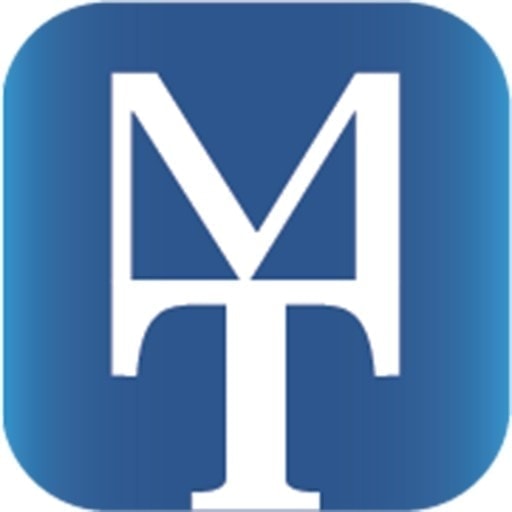
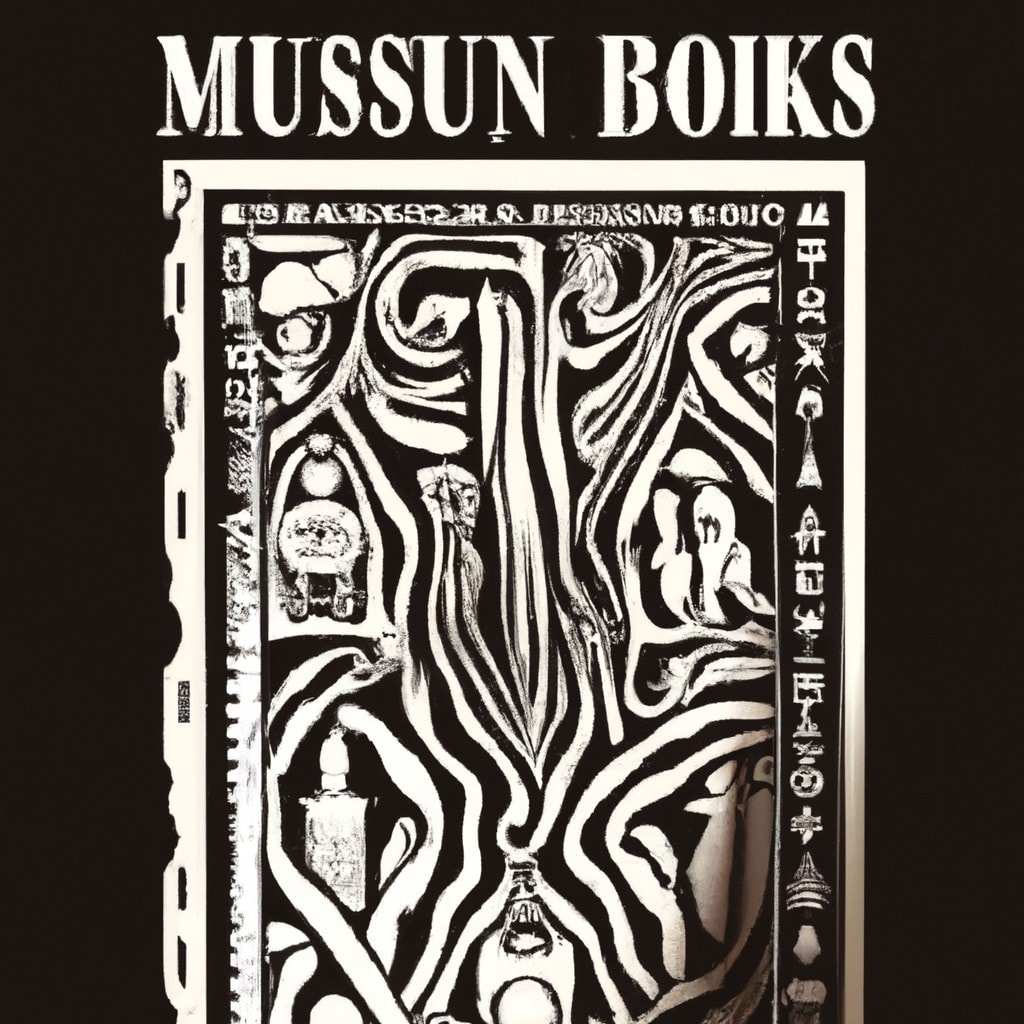
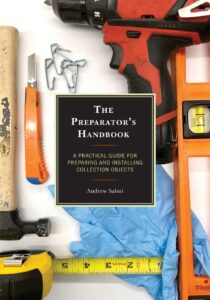
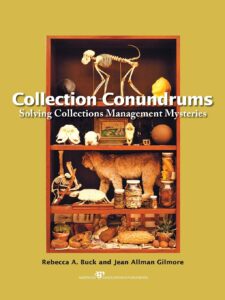
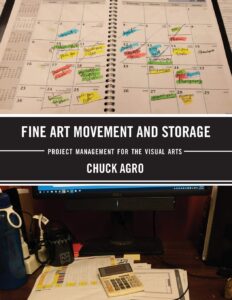
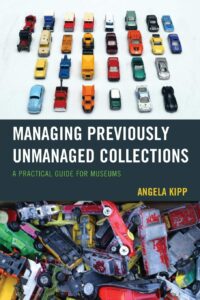
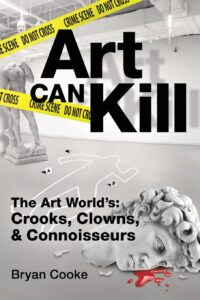
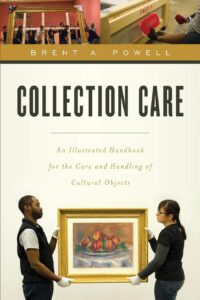

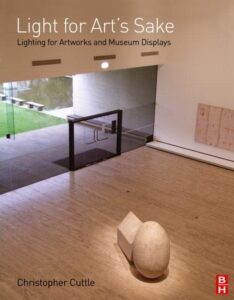
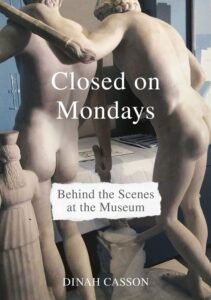




Leave a Reply
You must belogged in to post a comment.